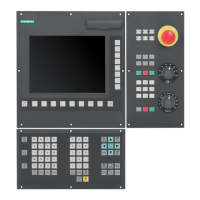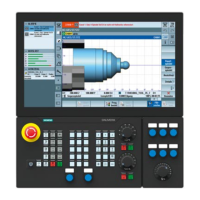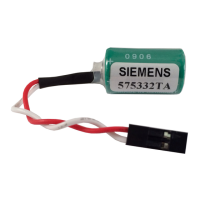Transformations
7.5 Orientations relative to the path
Job planning
Programming Manual, 03/2006 Edition, 6FC5398-2BP10-1BA0
7-39
7.5.2 Rotation of the tool orientation relative to the path
(ORIPATH, ORIPATHS, angle of rotation)
Function
With a 6-axis transformation, the tool can be rotated about itself with a third rotary axis to
orientate the tool as desired in space. With a rotation of the tool orientation relative to the
path using ORIPATH or ORIPATHS, the additional rotation can be programmed via the
THETA angle of rotation. Alternatively, the LEAD and TILT angles can be programmed using
a vector, which is located in the plane vertical to the tool direction.
Machine manufacturer
Please refer to the machine manufacturer's instructions. The interpolation of the LEAD and
TILT angles can be set differently using machine data.
Programming
Rotation of tool orientation and tool
The type of tool orientation relative to the path is activated using ORIPATH or ORIPATHS.
N... ORIPATH
Activate type of orientation relative to the path
N... ORIPATHS
Activate type of orientation relative to the path
with smoothing of the orientation characteristic
Activating the three angles that can be rotated:
N... LEAD=
Angle for the programmed orientation relative to
the surface normal vector
N... TILT=
Angle for the programmed orientation in the
plane, vertical to the path tangent relative to the
surface normal vector
N... THETA=
Angle of rotation relative to the change of
orientation in the tool direction of the third rotary
axis
The values of the angles at the end of block are programmed using LEAD=value,
TILT=value or THETA=value. In addition to the constant angles, polynomials can be
programmed for all three angles up to the 5th degree.
N... PO[PHI]=(a2, a3, a4, a5)
or
N... PO[PSI]=(b2, b3, b4, b5)
or
N... PO[THT]=(d2, d3, d4, d5)
Polynomial for the LEAD angle
Polynomial for the TILT angle
Polynomial for the THETA angle of
rotation
The higher polynomial coefficients, which are zero, can be omitted when programming.
Example: PO[PHI]=a2 results in a parabola for the LEAD angle.

